Links to educational resources and materials.
Youth Educational Activities
Our organization has taken an active role in climate education by offering a range of youth outreach materials. Our youth outreach materials serve to provide climate curriculum and activities for both informal and formal purposes. We are committed to providing opportunities for educators to include climate curriculum in their teaching, and we actively collaborate with educators to support their integration of climate curriculum into their classrooms. Invite us to your community or your next event! It can range from teacher professional development, festivals, after school programs or summer camps. Contact us at Info@SouthCentralClimate.org for more information.
Click on the activity’s name below to access the related resources.
This activity aims to educate children on the concept of butterfly phenology. It involves teaching them about the timing of different stages of a butterfly’s life cycle, such as egg-laying, pupation, and emergence, in relation to the changes in seasons. By learning about these aspects, children can gain a better understanding of the natural world and appreciate the complexity of these fascinating insects, while also learning how climate change is affecting phenology.

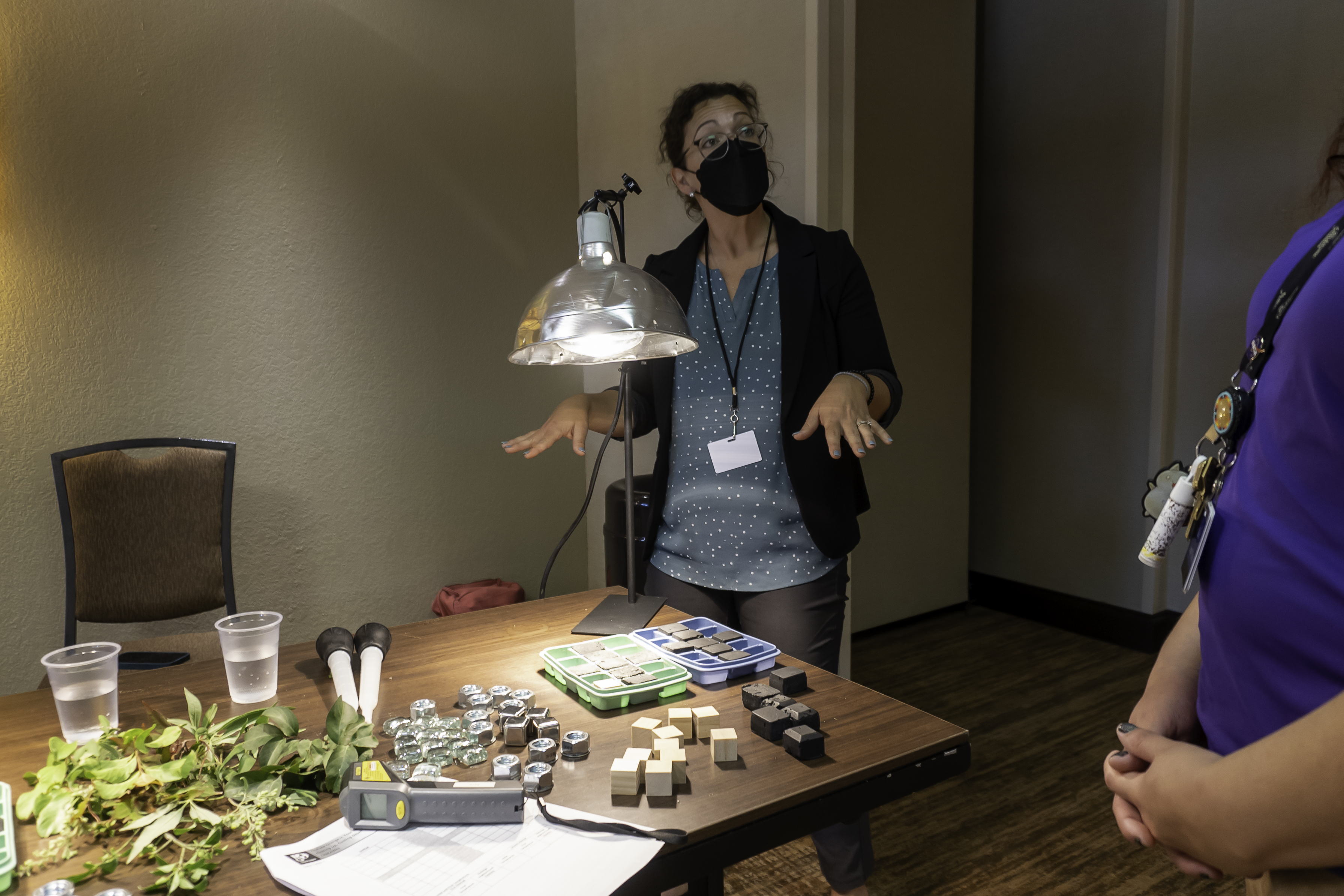
This activity will allow participants to gain a practical understanding of urban heat and its effects. They will learn about the concept of urban heat, the various impacts it has, and how different materials absorb heat. The activity will also provide solutions to slow down the effects of urban heat.
This activity will allow participants to see how the past climate is different with respect to rainfall and soil recharge than a warmer future climate.
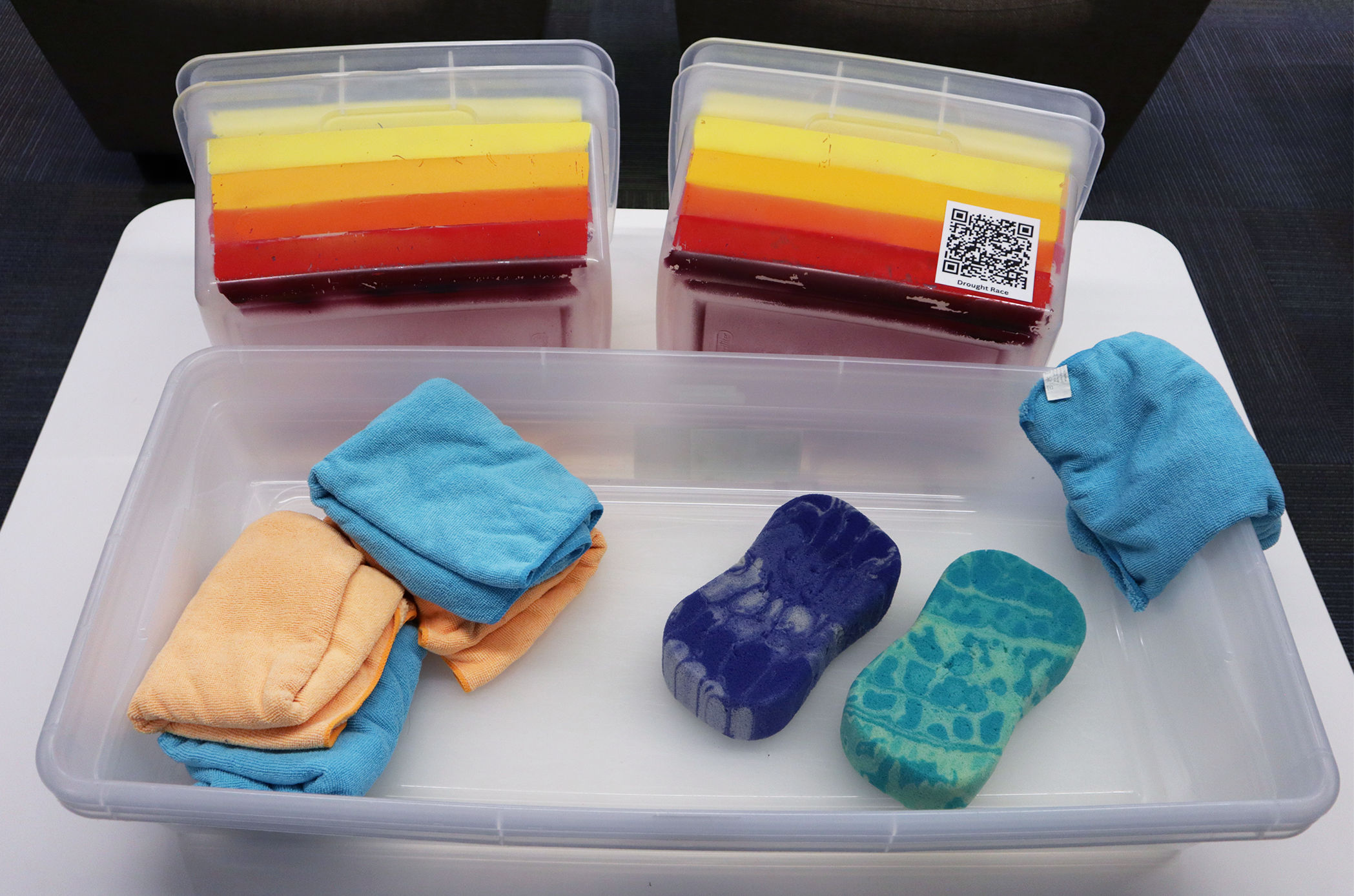
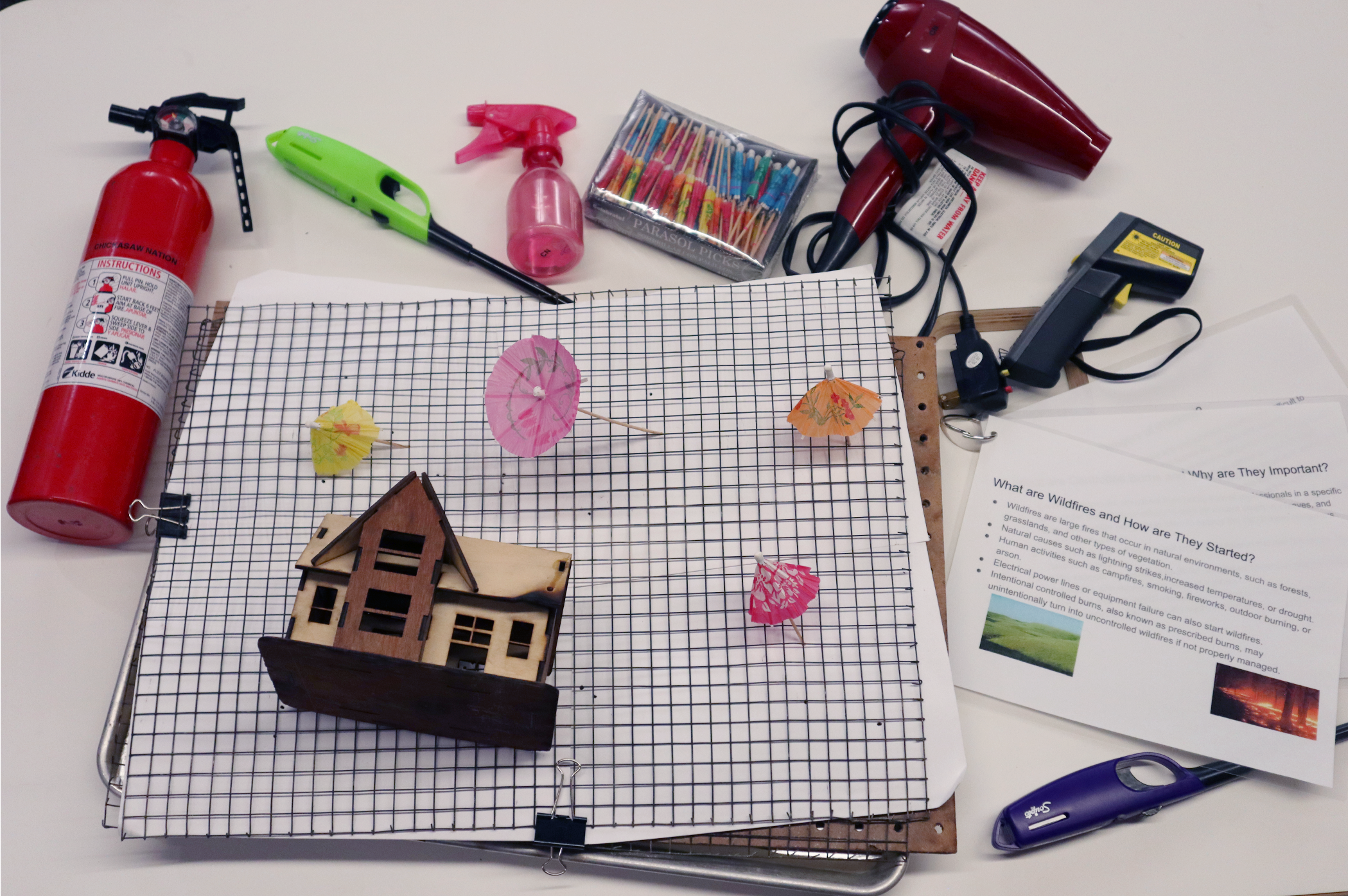
This activity is an effective way to educate children about the impact of climate change on fires. Children can gain a better understanding of how forest management practices and climate change are interconnected. The activity helps children understand the various factors that contribute to fire risk, such as increased temperatures, winds, untamed forest, and prolonged droughts, and how these changes can affect the natural environment. By learning about these issues, children can develop a deeper appreciation for the importance of controlled fires and taking steps to reduce our impact on the environment.
This activity aims to demonstrate the impact of carbon dioxide on our atmosphere and its contribution to climate change by increasing temperature. One of the mechanisms involved is the greenhouse effect, where certain gasses present in the Earth’s atmosphere absorb and re-emit infrared radiation, causing the surface temperature to rise. This will give participants a better understanding of what greenhouse gasses are and how they are affecting the atmosphere.
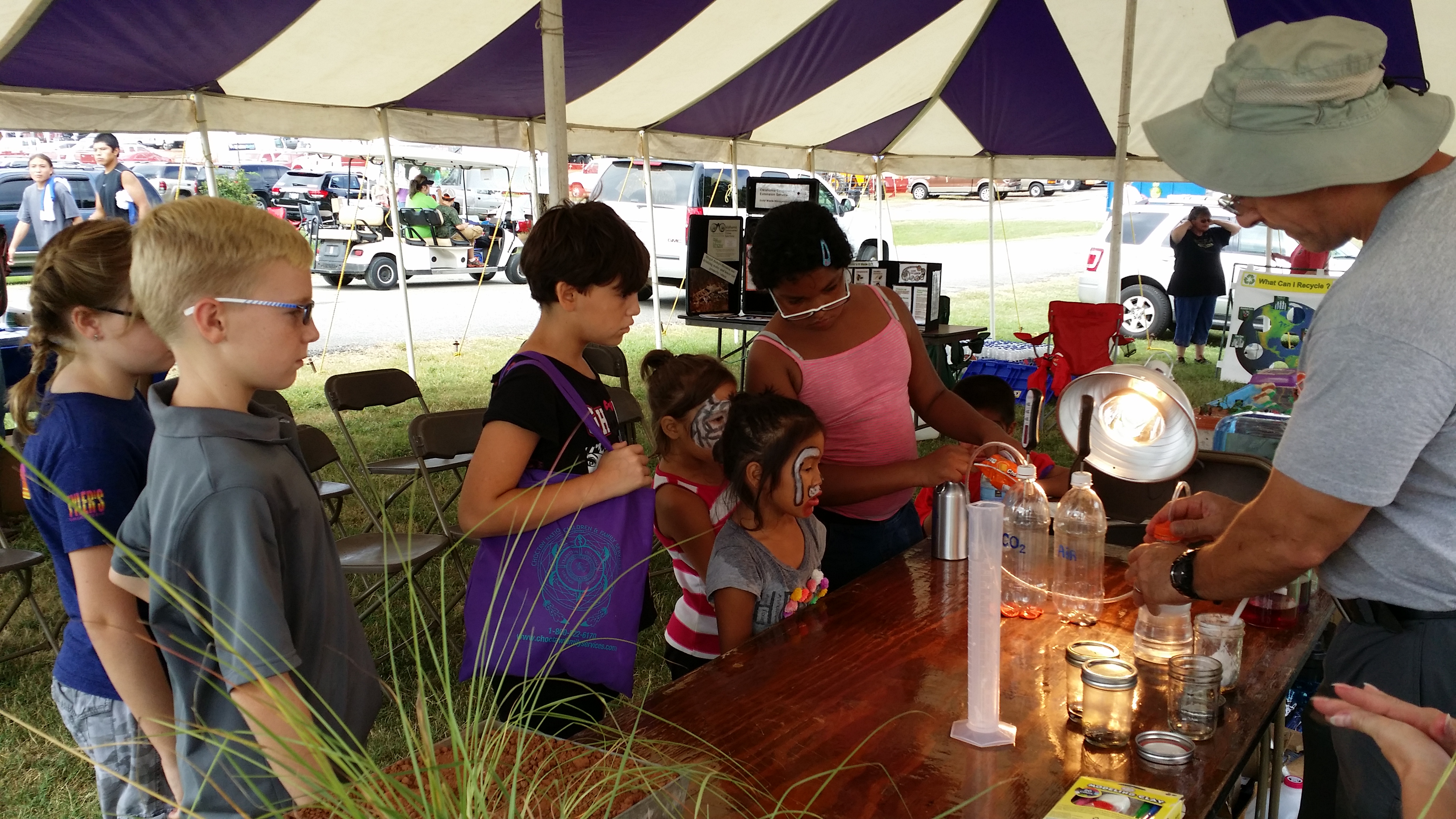
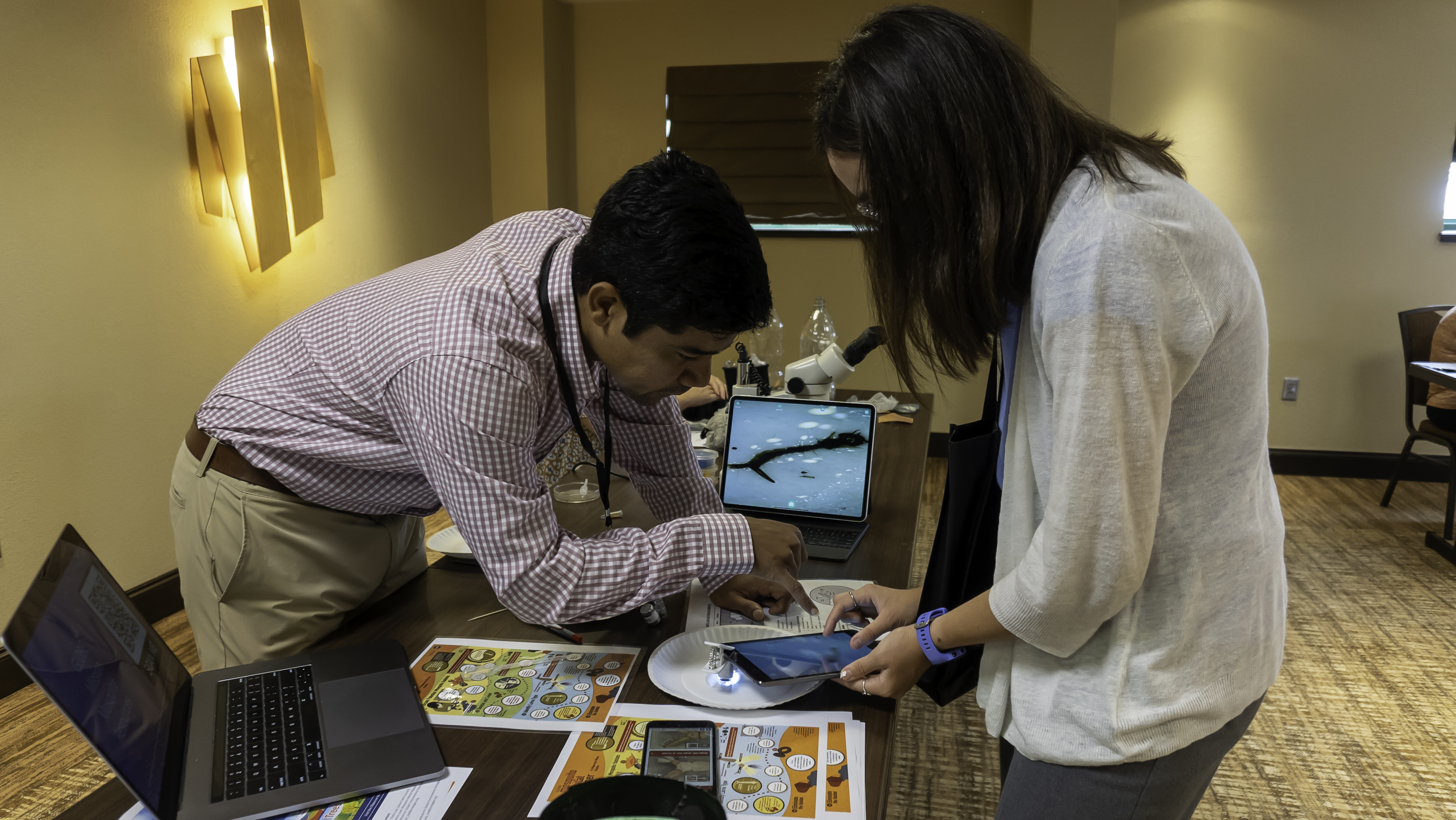
This activity uses citizen science to raise awareness among the younger generation about the different diseases that can be transmitted by mosquitoes and the potential risks they pose to public health. Additionally, this activity will allow the participant to learn how climate change is affecting mosquitos.
The NASA Global Precipitation Model activity employs the use of cubes as a means to graph different sources of precipitation data, enabling comparisons of precipitation averages and seasonal patterns across multiple locations. The cubes serve as a visual representation of the data, allowing for a more accessible and comprehensive analysis of the information and allows the participants to see climate projections.
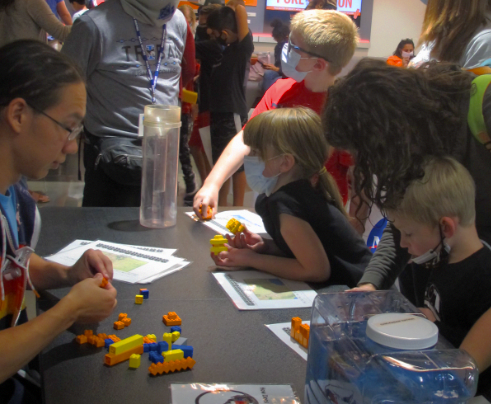
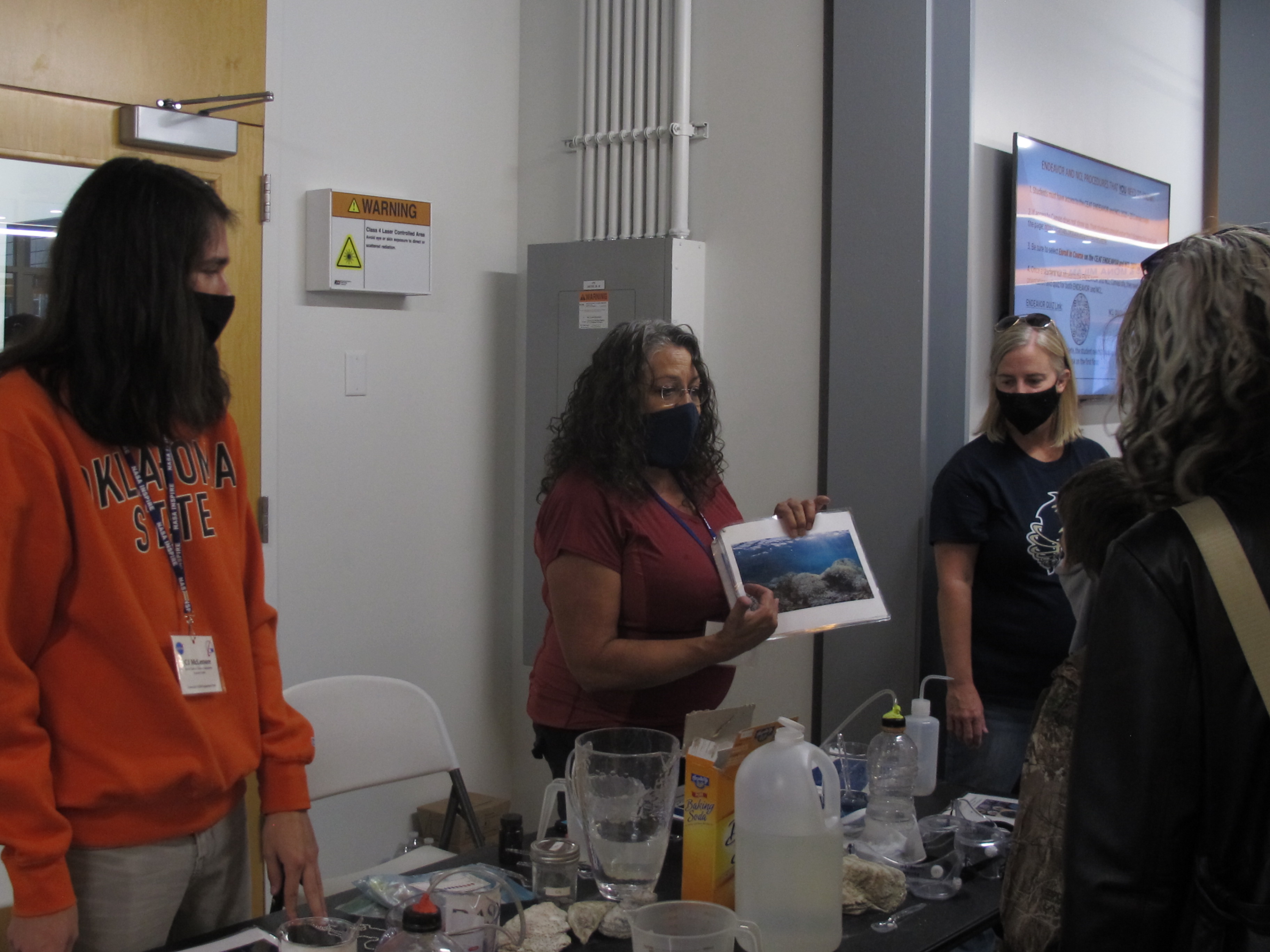
This activity explores the impact of increasing carbon dioxide emissions on oceanic chemistry, ecosystems, and human societies. It examines the complex interplay between carbon dioxide emissions, ocean acidification, and the consequential ecological and socio-economic consequences.
This activity aims to educate participants on rainwater harvesting by demonstrating the importance of this practice and providing instructions on how to create their own system. In addition, the activity highlights the impact of climate change on rainwater harvesting and emphasizes the need for responsible water consumption. By the end of the activity, participants should have a solid understanding of the benefits of rainwater harvesting and be equipped with the knowledge and skills to implement it in their own lives.
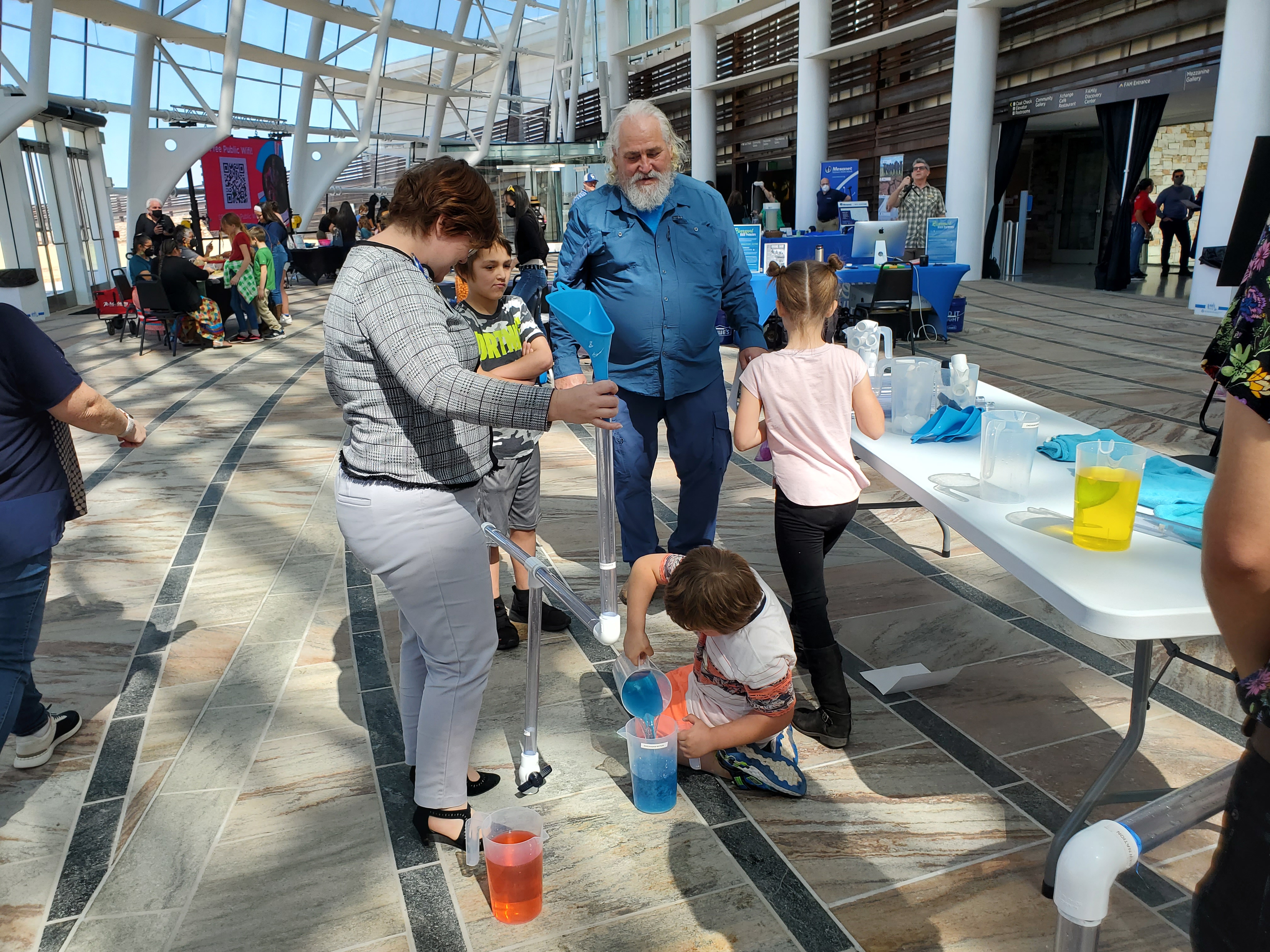
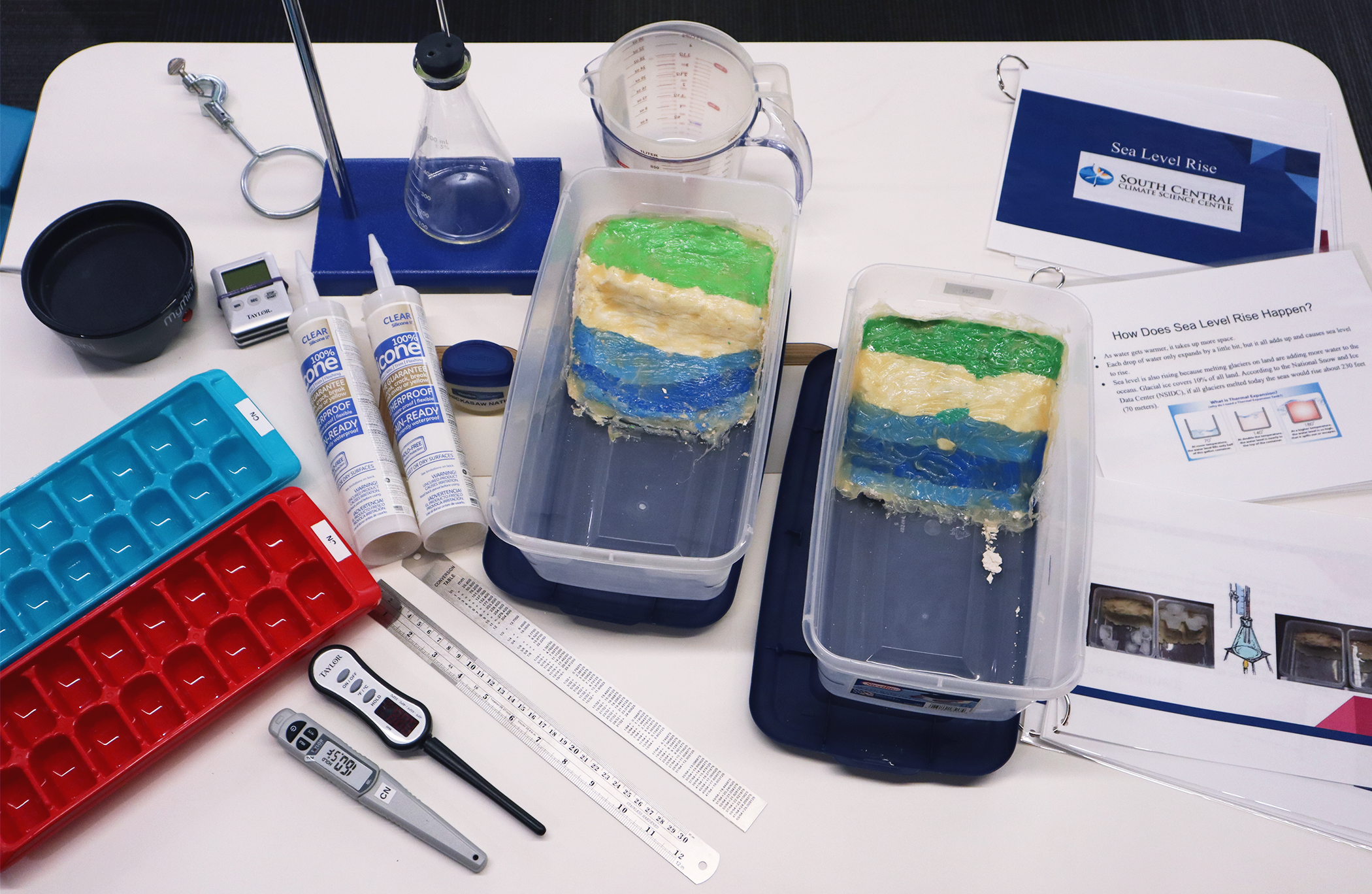
This activity will provide an explanation of sea level and its effects. It will cover the concept of sea level, including what it is and how it is happening, as well as the impacts of rising sea levels on the environment and human populations. By the end of this activity, participants will have a better understanding of the significance of sea level and its role in global climate change.
This activity allows students to learn about allocating water resources in an area based on average rainfall and then allows them to try again with ‘drought’ conditions to show the impacts that water managers must face when dealing with water allocation issues.
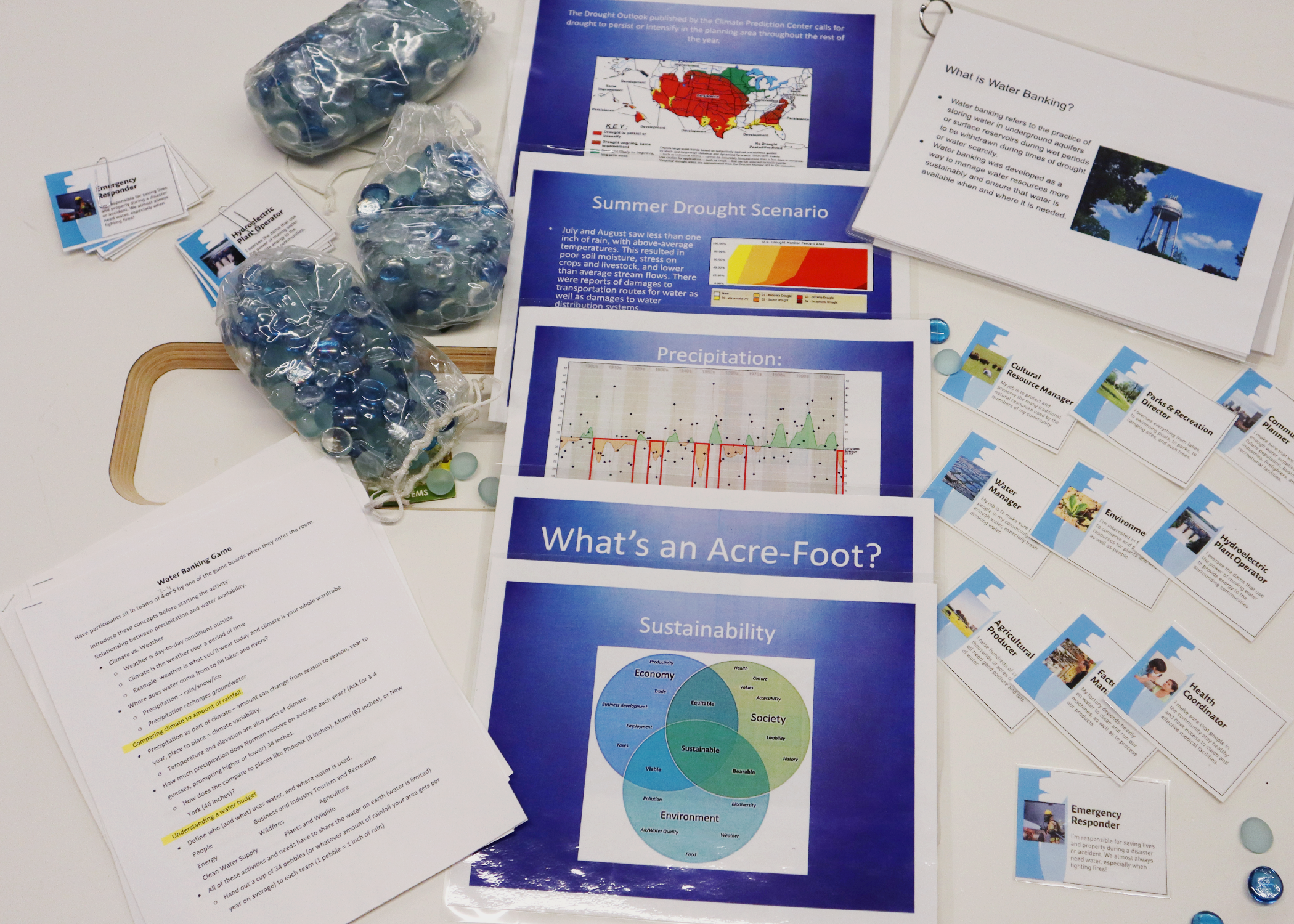
Additional Resources
Animals at Risk
Learn about what climate change is, how it impacts animals, and why some animals are more susceptible to these changes than others.
Bearly any Ice Game
In this activity, students act as seals or polar bears in an Arctic food chain and learn how shrinking Arctic ice affects the polar bear’s ability to find food.
The Climate Literacy Guide
This guide promotes greater climate literacy by providing an educational and communication framework of principles and concepts.
Climate Resilience! How can communities adapt to a changing climate?
Climate Resilience! is a freely available community research guide developed by the Smithsonian Science Education Center (SSEC) in partnership with the InterAcademy Partnership as part of the Smithsonian Science for Global Goals project. Smithsonian Science for Global Goals community research guides use the United Nations Sustainable Development Goals (SDGs) as a framework to focus on sustainable actions that are defined and implemented by students.
Intro to Climate Resilience Lessons
Educators can access EcoRise’s Introduction to Climate Resilience lessons along with dozens of other hands-on, standards-aligned lessons related to sustainability, design thinking, and environmental justice lessons at ecorise.org/enroll. For help accessing or using these lessons, please reach out to support@ecorise.org.
Sea-Level Rise Curriculum
A four-module curriculum designed for high school teachers to introduce sea-level rise impacts and discuss community based solutions with their students.
Soil in-service guide
Soils 4 Teachers resources from the Soil Science Society of America
USGS CASC Educational Resources
The CASC network has supported over 200 students and early-career scientists and managers through 10+ fellowship and training programs. Participants conduct groundbreaking research on climate change impacts and adaptation, develop skills in science communication and partner engagement, and build networks of peers and mentors to support future career development.
USDA Southwest Climate Hub Educational Units
Through a range of activities, students can learn about climate change in the water cycle, agricultural systems, carbon cycles, and wildfires.
Wildlife and Woodlands Toolkit
The U.S. Global Change Research Program (USGCRP) targets classroom teachers as well as informal educators, and a kit for middle-school grade band. Learn by viewing videos, browse kit materials, and explore eco-regions nationwide.